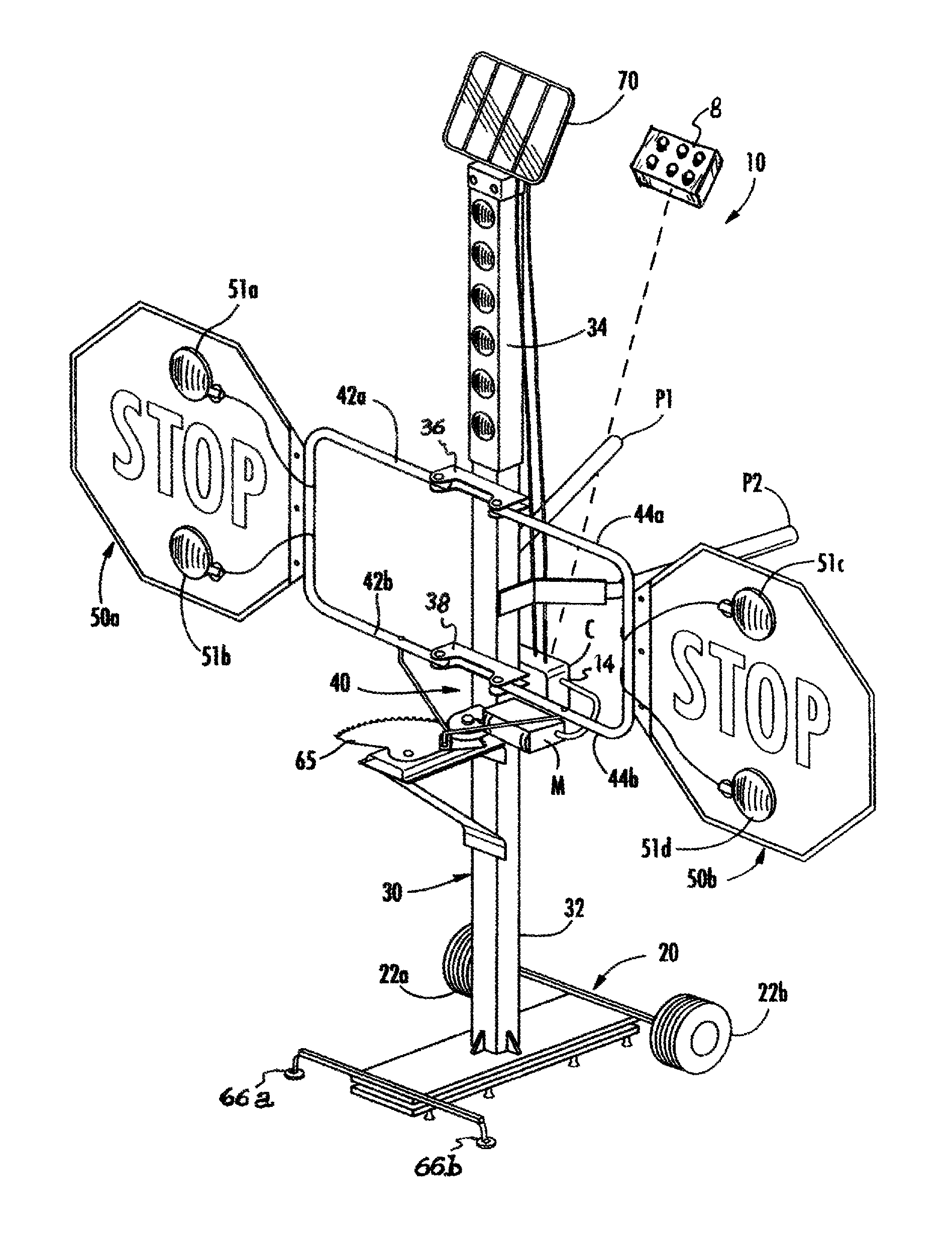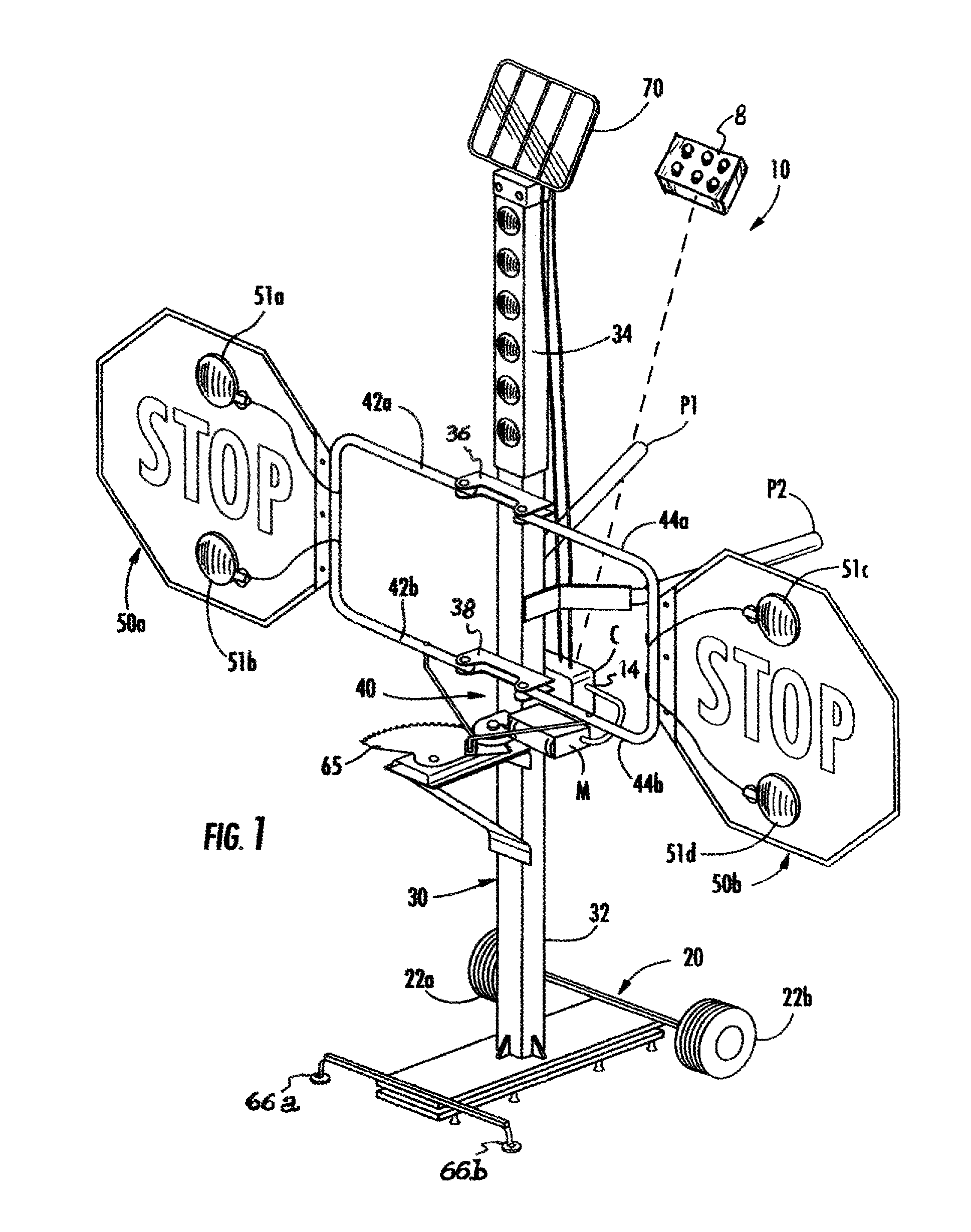Portable electro-mechanical signal system
a signal system and electromechanical technology, applied in traffic signals, instruments, roads, etc., can solve the problems of inconvenient traffic stop, inconvenient placement, and insufficient traffic stop time, etc., to achieve convenient placement and sufficient traffic stop time
- Summary
- Abstract
- Description
- Claims
- Application Information
AI Technical Summary
Benefits of technology
Problems solved by technology
Method used
Image
Examples
Embodiment Construction
[0055]In FIG. 1 the present invention, referred to herein as freestanding, portable (i.e., easily moved by hand) remote controlled electro-mechanical signal system 10 (or simply, signal system 10), is depicted as including base 20 equipped with at least one wheel 22a, 22b. Signal system 10 structure further comprises a substantially vertical stanchion or tower 30 affixed to said base 20. Tower 30 is structurally defined by a lower portion 32 and upper portion 34. Prominently on said tower 30 upper portion 34 first side (also known as the “display side” and best viewed in FIGS. 1 and 4B), at least one warning light 52 (see also FIGS. 4A and 4B) is disposed so as to form an illuminated upper portion 34. Of course multiple warning lights will likely prove more effective in forming a lighted section of said tower 30 upper portion 34.
[0056]By way of example, a substantially vertical array of warning lights 52a, 52b, 52c, 52d, 52e and 52f may be displayed (SeeFIG. 1, 4A, 4B). Warning ligh...
PUM
 Login to View More
Login to View More Abstract
Description
Claims
Application Information
 Login to View More
Login to View More - R&D
- Intellectual Property
- Life Sciences
- Materials
- Tech Scout
- Unparalleled Data Quality
- Higher Quality Content
- 60% Fewer Hallucinations
Browse by: Latest US Patents, China's latest patents, Technical Efficacy Thesaurus, Application Domain, Technology Topic, Popular Technical Reports.
© 2025 PatSnap. All rights reserved.Legal|Privacy policy|Modern Slavery Act Transparency Statement|Sitemap|About US| Contact US: help@patsnap.com



